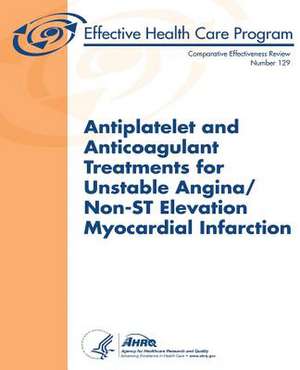Antiplatelet and Anticoagulant Treatments for Unstable Angina/Non-St Elevation Myocardial Infarction
Autor U. S. Department of Heal Human Services, Agency for Healthcare Resea And Qualityen Limba Engleză Paperback
Preț: 338.84 lei
Preț vechi: 356.66 lei
-5% Nou
Puncte Express: 508
Preț estimativ în valută:
64.86€ • 70.47$ • 54.52£
64.86€ • 70.47$ • 54.52£
Carte disponibilă
Livrare economică 31 martie-14 aprilie
Preluare comenzi: 021 569.72.76
Specificații
ISBN-13: 9781494489328
ISBN-10: 1494489325
Pagini: 820
Dimensiuni: 191 x 235 x 41 mm
Greutate: 1.38 kg
Editura: CREATESPACE
ISBN-10: 1494489325
Pagini: 820
Dimensiuni: 191 x 235 x 41 mm
Greutate: 1.38 kg
Editura: CREATESPACE
